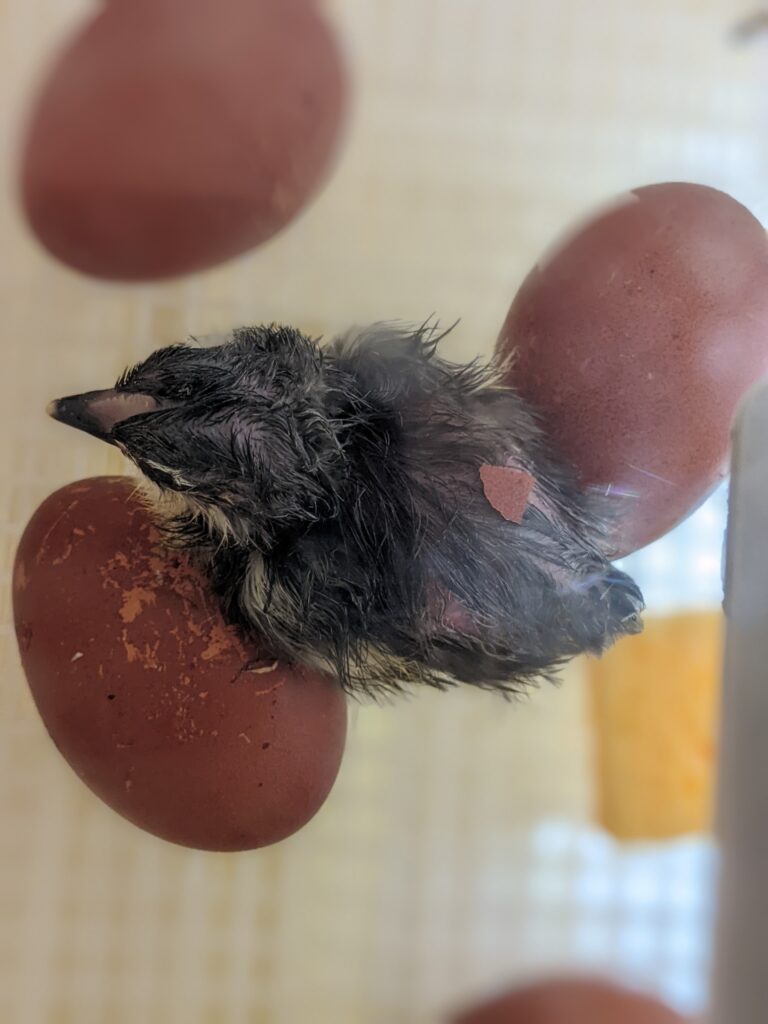
It’s hatching day here on the farm and we have chicks working on emerging from the confines of their eggs. For me, hatching is always fun, gratifying, and a little stressful…but, in the end, definitely worthwhile.
Each and every time, I marvel at how an egg that I might otherwise have eaten can, with the right conditions and enough time, become a tiny chick that will grow like a weed. Some of the chicks will be females and eventually lay eggs; others (roughly half) will be males that will either run their own flocks or become farm-to-table chicken.
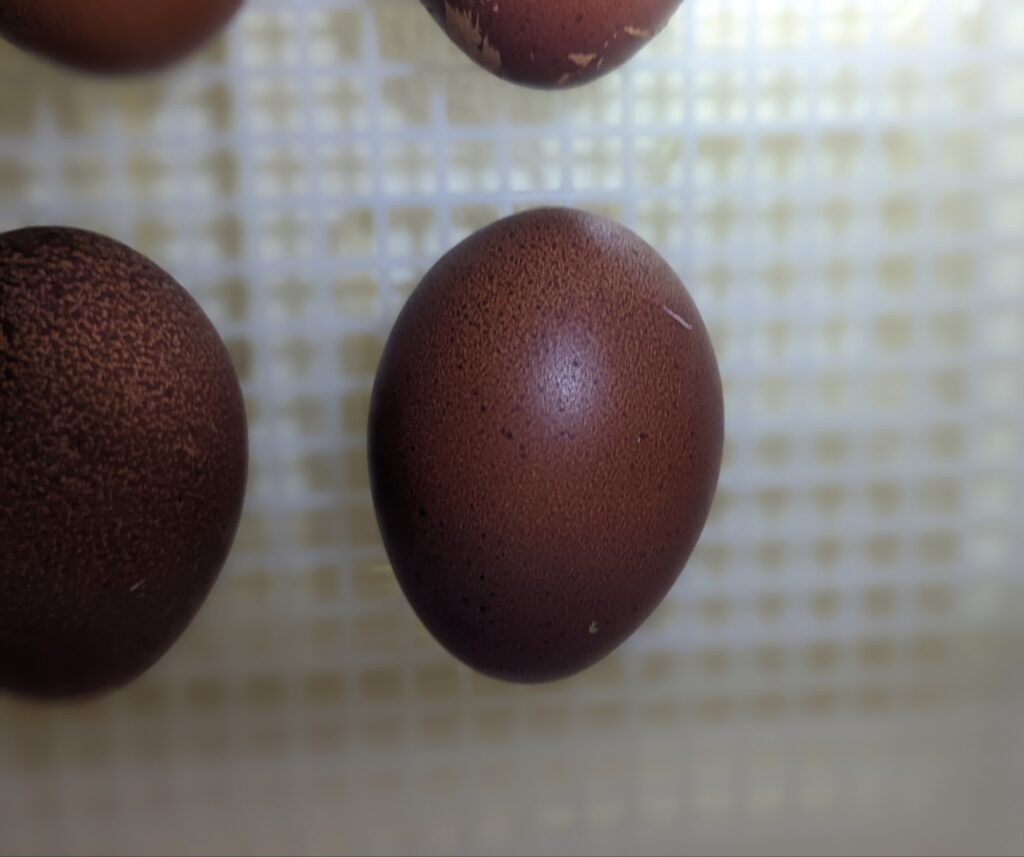
The irony is not lost on me as I am, right now, cooking a couple of the cockerels from earlier hatches in my Instant Pots. As I do so, I am thankful for the humanely-raised meat that these cockerels will provide, nourishment that I believe is superior to (and far more delicious) than the factory farmed chicken from the grocery store. And because I choose to hatch eggs from my birds, I’m not reliant on hatcheries to provide me with a supply of meat chicks each year.
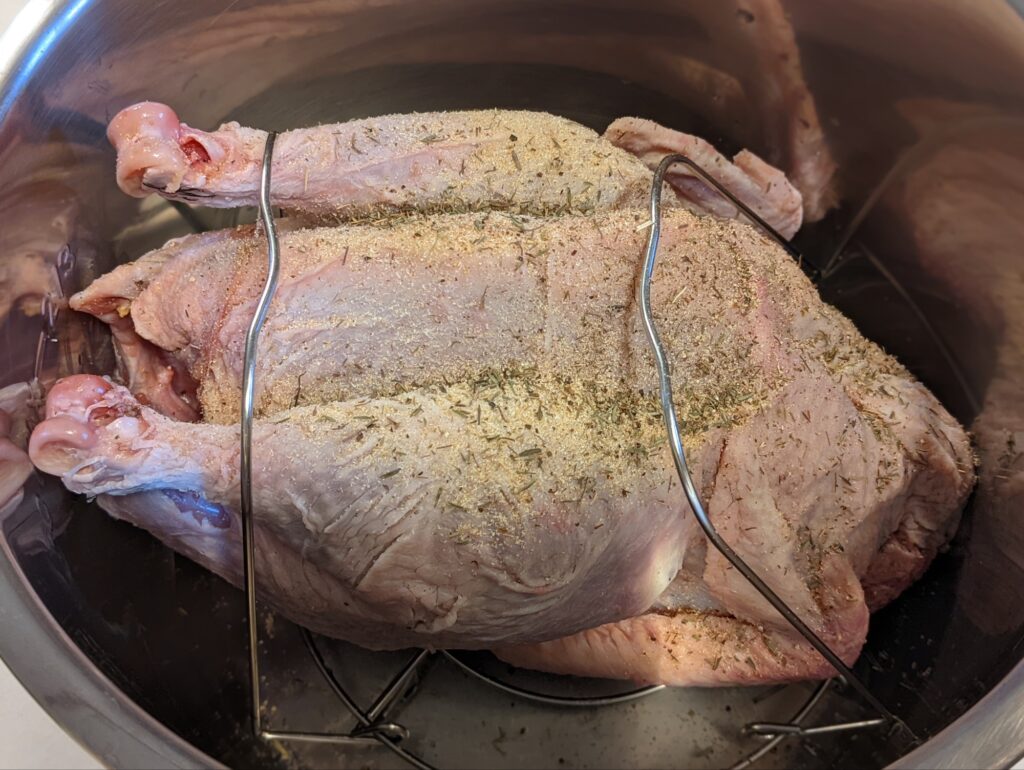
But back to the hatchers: one holds just the Black Copper Marans eggs and the other, just Olive Egger eggs (to ensure that there are no mix-ups). The BCM eggs actually began hatching before the OEs, and a chick was out yesterday evening. Right now – early afternoon – there are 4 BCM chicks out and several more external pips.
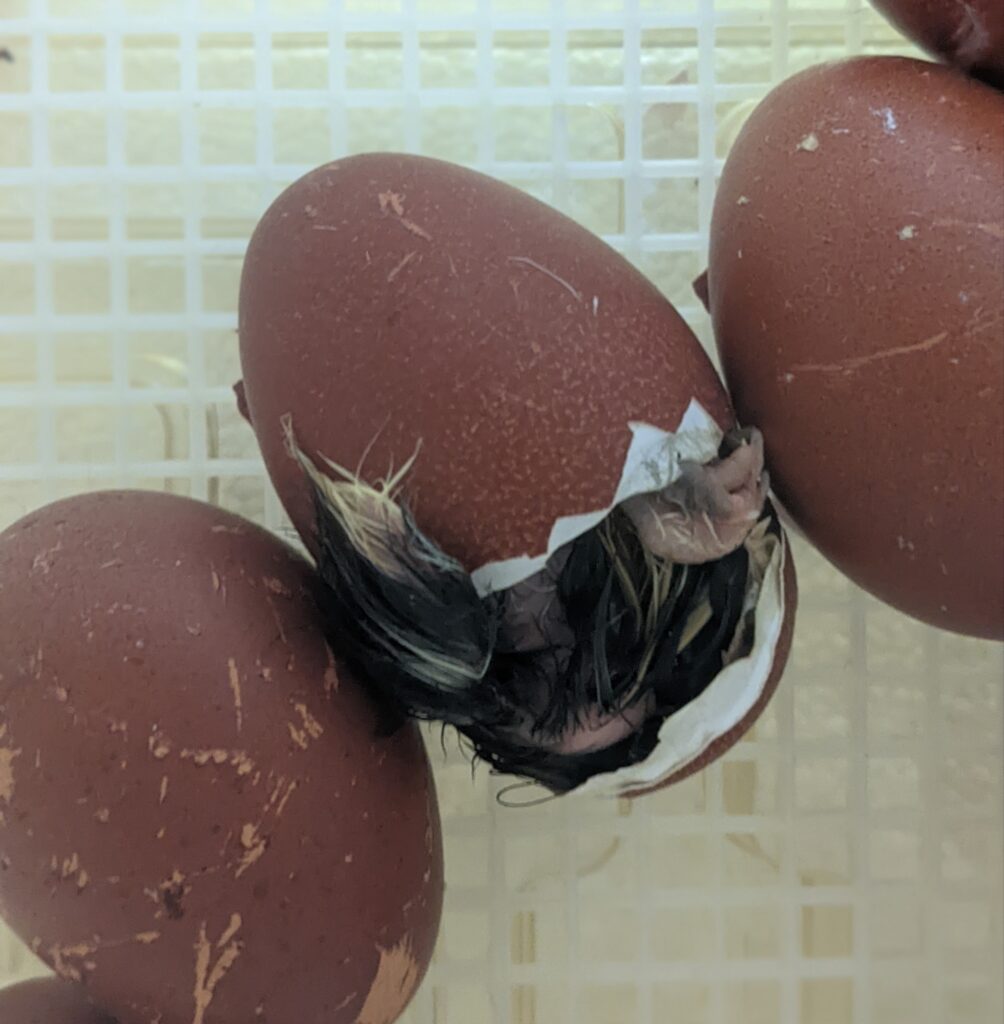
The Olive Egger hatch has been going a bit more slowly: just one chick hatched so far today, though there are others with external pips. Remember, plus or minus 2 days from the 21 day incubation period is considered within normal hatching time frames. I think the chick that hatched may be blue – it’s a bit sticky from hatching gunk, so I won’t be sure until it dries and fluffs up. Fingers crossed!
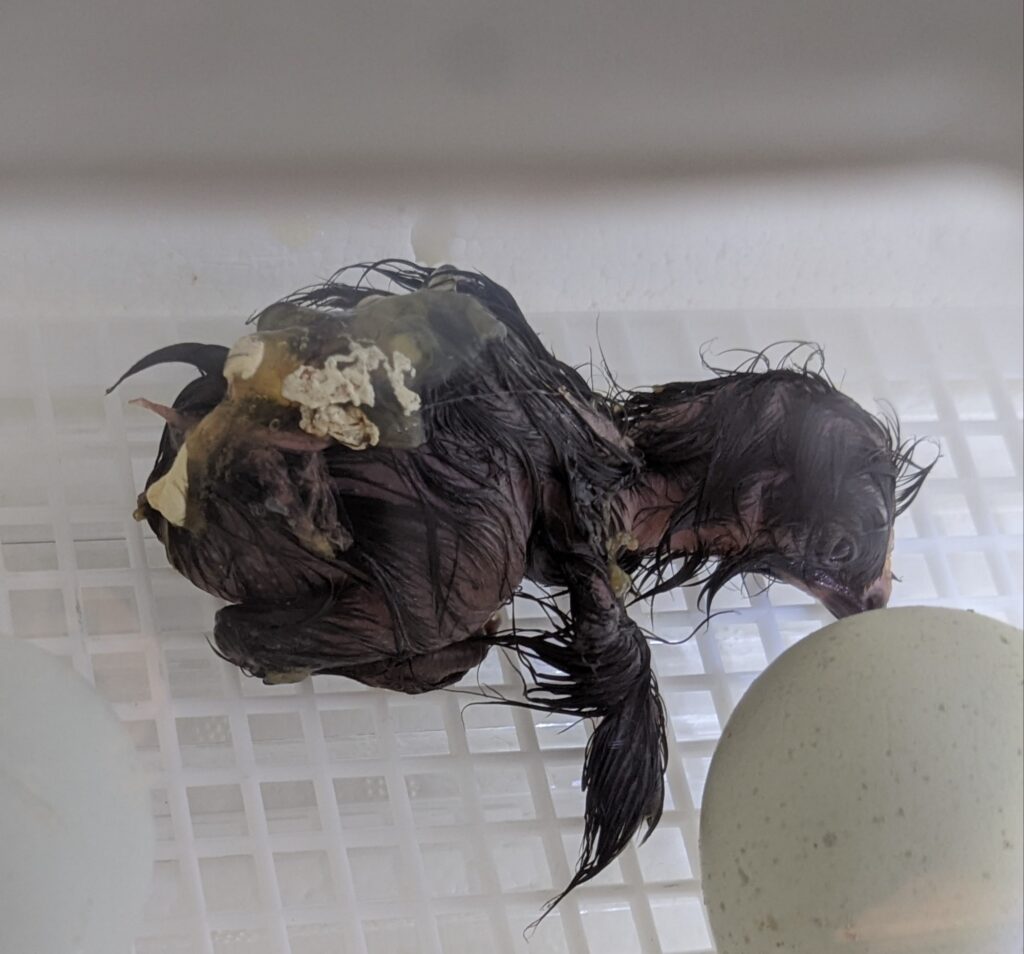
The chicks that have hatched so far have done so unassisted, but I did notice that one BCM egg has pipped on the wrong (pointed) end. Chicks that pip the wrong end of the egg can experience a number of problems in hatching, including difficulty in getting into the right position for hatching (malposition).
One of the most immediate concerns with wrong-end pippers is that they miss the air cell (typically in the large/fat end of the egg) and are thereby deprived of the air reserve to which they would have access if they had pipped the right end. Knowing that if a wrong-end pipper fails to break all the way through the shell, it can run out of air and die, I always check on these eggs to make sure there’s a hole allowing air to reach the chick; if not, I’ll make a small “safety hole”.
Fortunately, the wrong-end pipper did make it all the way through the shell. My examination showed that the blood vessels are still active, so the chick is not yet ready to hatch. Knowing it won’t suffocate, I’ll just continue to monitor progress for now, waiting for veins to recede and yolk to absorb. While it is possible and I’d like for this chick to hatch on its own, too, I am prepared to assist…when it’s needed. Patience is very important at this point to avoid causing a bad outcome for the chick.
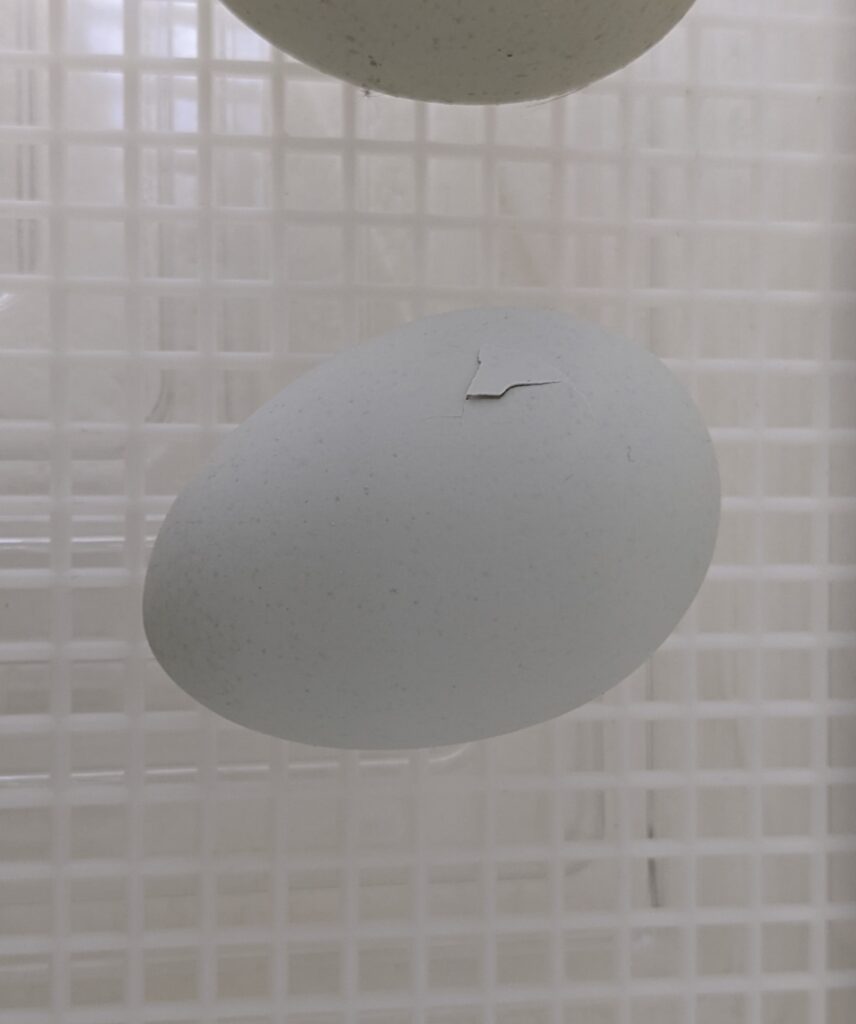
The hatch will likely go on into tomorrow, at least, so I’ll be frequently monitoring the hatchers’ temperature and humidity, as well as noting and examining eggs that may potentially run into trouble. With luck, there will be many more chicks running around here in the next couple of days. Stay tuned for the next update!
